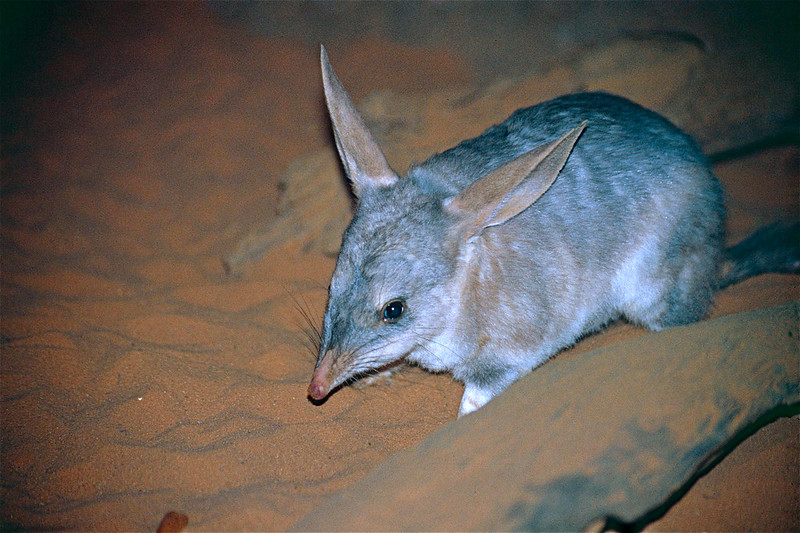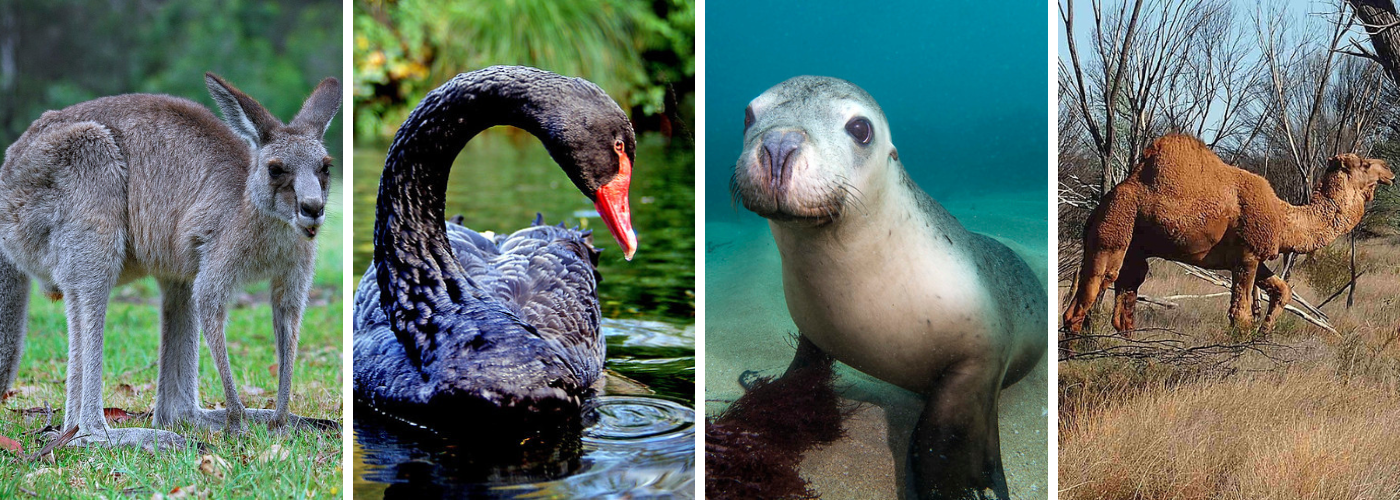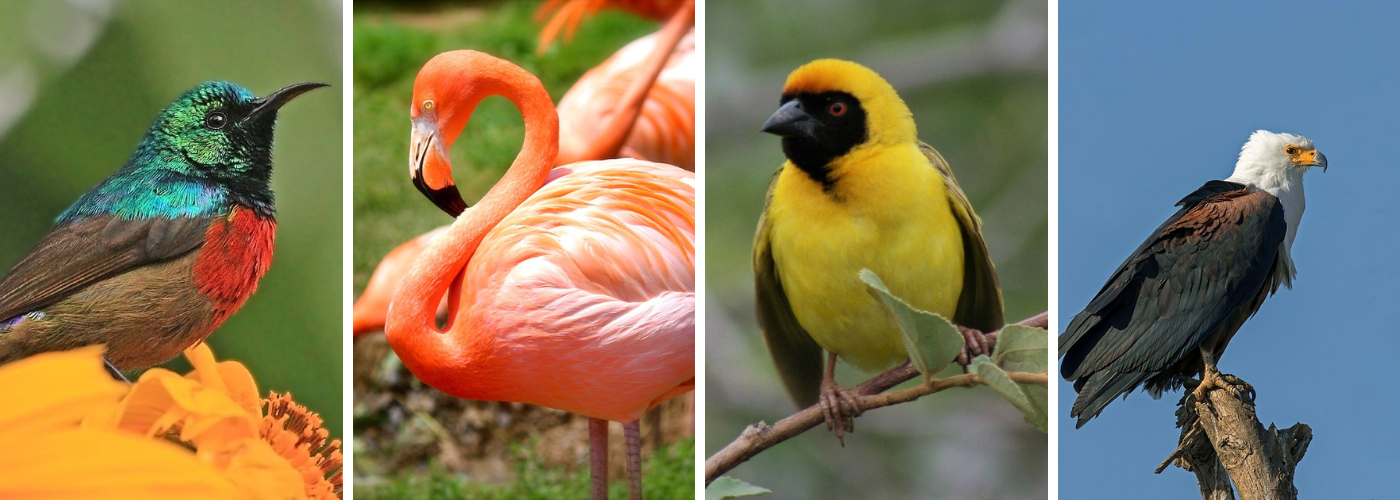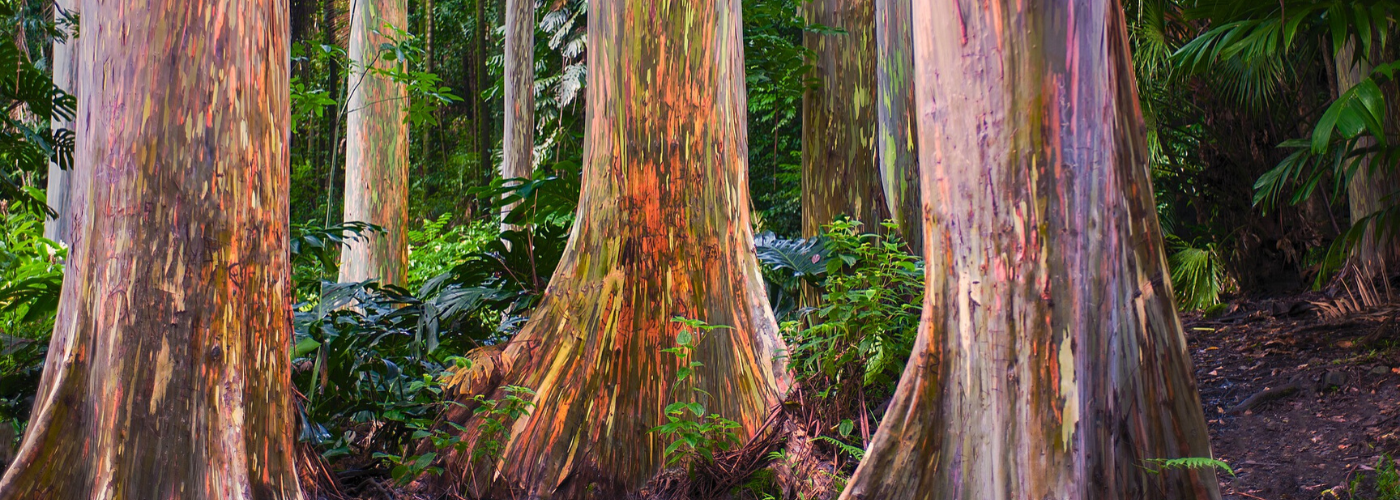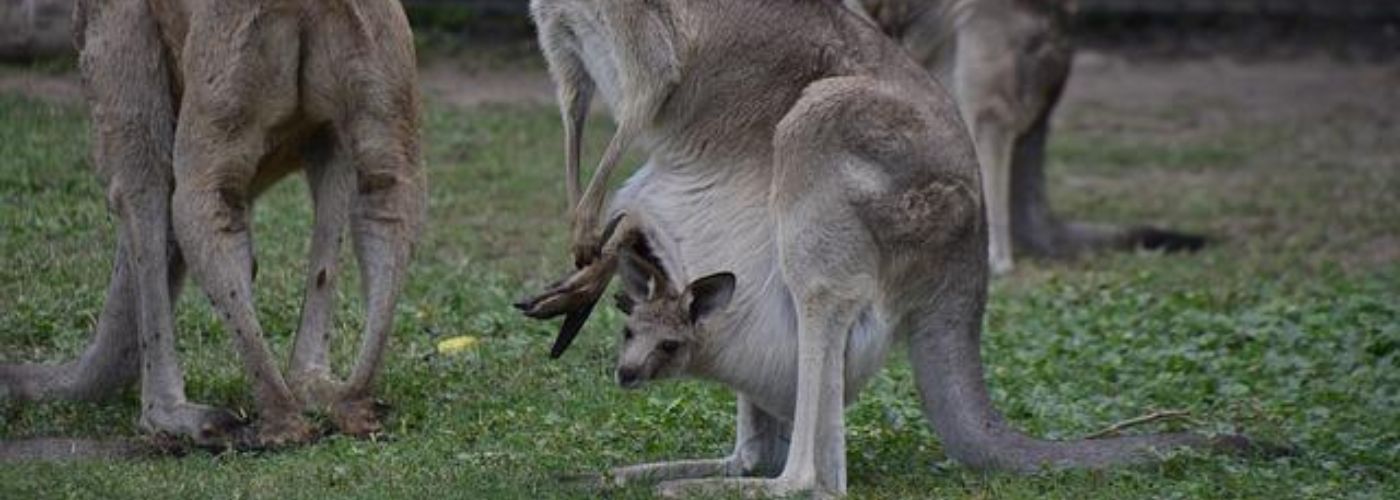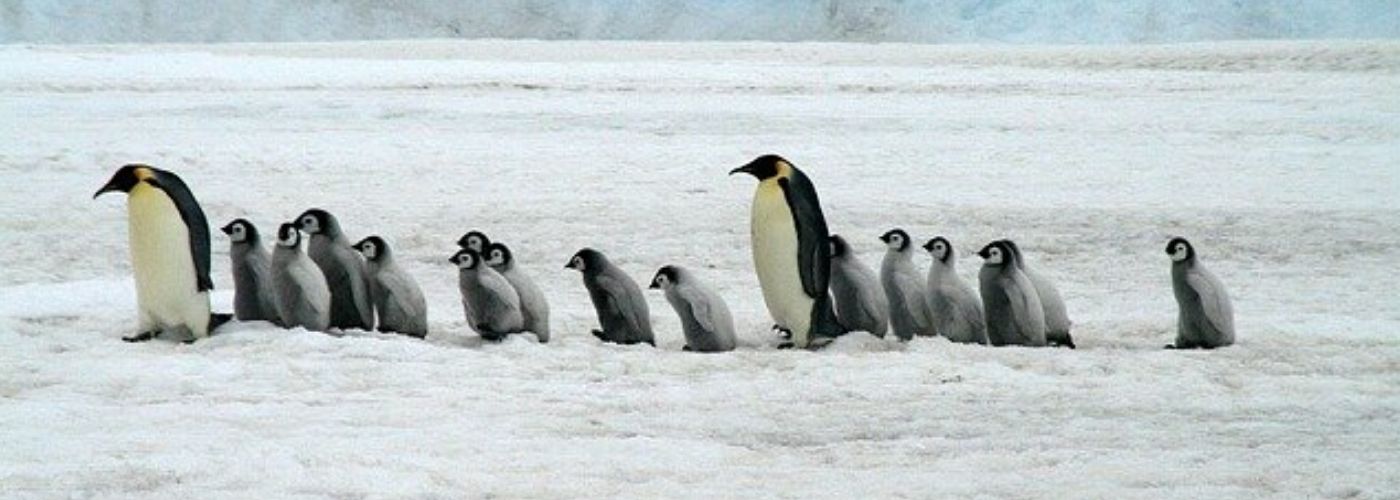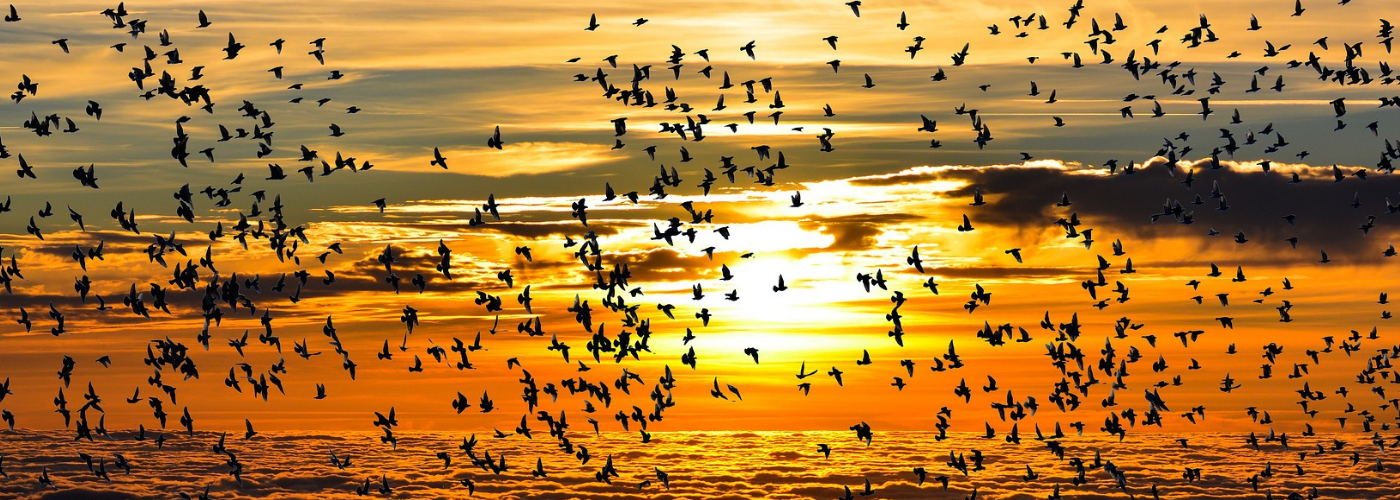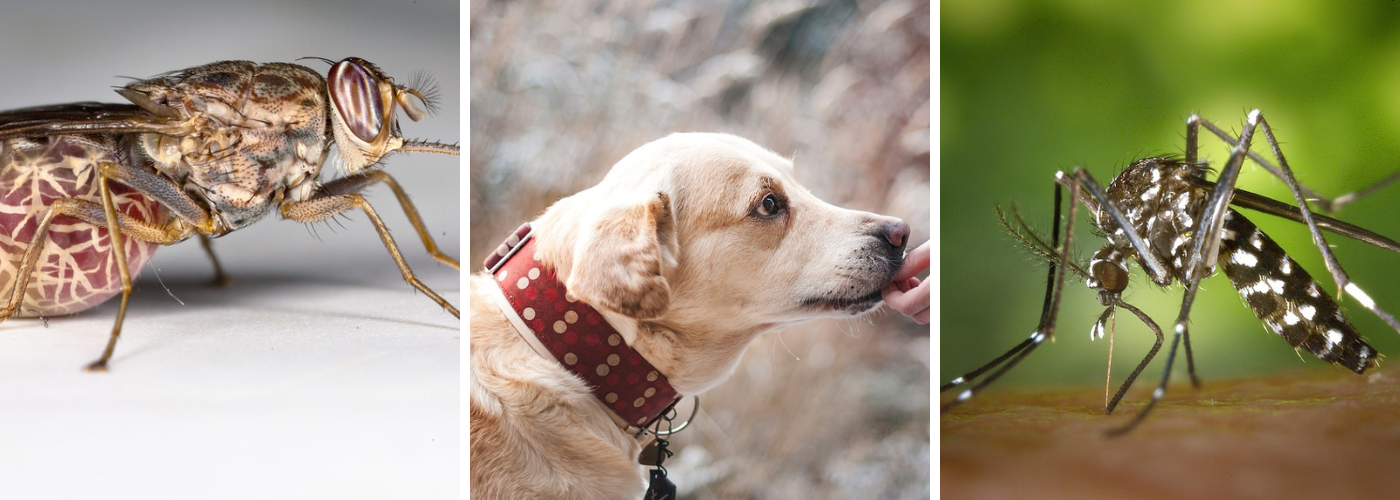Exploring and discovering the depths of the wildlife, one can never deny the fact of how amazing and mesmerizing every creature is. All of them have their specialty and are blessed with amazing features. Among the differences they have, their unique ability to utilize these differences makes them a more extraordinary existence of nature.
There’s nothing new where we know some animals are blessed with a built-in pocket to carry their young ones in soon after the little ones are born. These animals with pouches are known as pouched animals or marsupials because adult females have a pouch or marsupium to carry their babies.
But how many of us know such animals besides the kangaroo which fits its little babies in its pocket and keeps it safe there?
Here’s a list of top animals from the animal kingdom which has pouches in different parts of their body and they use these pouches to nourish and keep the babies warm and safe until they become mature and strong.
Mammals With Pouches
Here is the list of marsupials or animals with pouches:
1. Kangaroo (Family Macropodidae)

When it comes to animals carrying their little ones in their pocket, Kangaroos are the first ones to cross our minds. The little hopers are still not developed to independently hop around and in return to protect them, kangaroos keep their little ones safely in their pockets. But besides a pocket of protection, these bags are much more complex spaces that also work as a nourishment provider for the little joys.
The newborn baby stays in the womb for just 33 days. These joys are born blind, deaf, and hairless too. The bag is in the shape of a bean and it has some antibodies to kill germs and keep the little ones safe.
2. Koalas (Family Phascolarctidae)
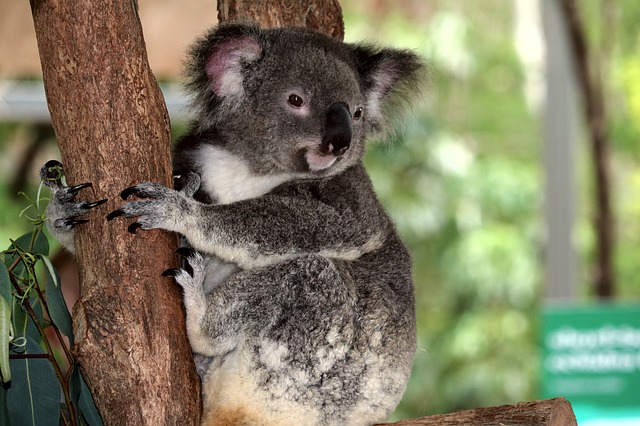
Koalas are one of the most common and cute animals from the marsupials group which has a pocket to keep their little one protected and safe. They also carry their little ones here to keep them clean and nourished. Nature truly has blessed a lot of these animals. The function of pouches in koalas is beyond our imagination. They also use the pouches to keep themselves and their baby koalas clean. The female koalas secrete an antimicrobial liquid in her pouch just before she gives birth. These liquids help in preparing for the arrival of healthy babies.
Koalas are usually found in regions of high densities with good fertile soil where trees grow with fresh fruits along. One can easily spot koalas in Western Australia and Northern territory.
3. Wombats (Family Vombatidae)
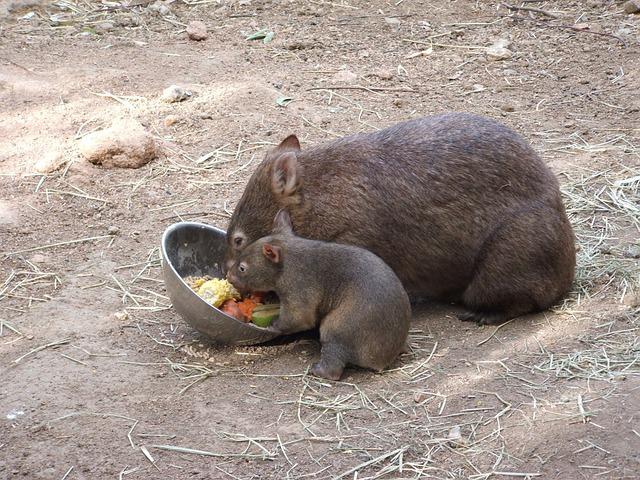
While most animals have their pouch in front, wombats are blessed with a pouch on their back. Just like other animals. The little ones crawl back to the back of their mother and stay there until they fully develop. Also, wombats have a very different time lapse when it comes to giving birth. A female wombat gives birth to a young one only once every two years. The little joey stays there on the back-pouch of the mother for 5 months till it fully grows.
4. Possums (Family Didelphidae)
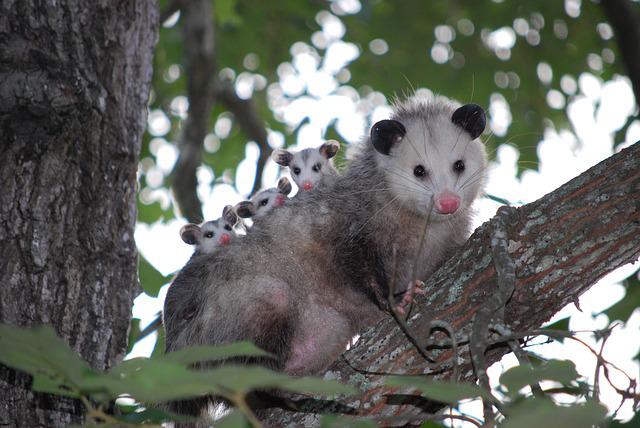
Possums are also marsupials that have their pouch but are hardly visible. What sets them apart is their unique pouch which is located in the lower abdomen region. Neither are they as big as a Kangaroo nor do they have visible pouches. But Possums do carry their young ones in these small pouches for several months before the young one gets developed.
It’s quite a unique process in nature when it comes to these creatures. Their young ones come out just the size of a peanut and are hardly visible. Young ones stay in these little lower abdomen pouch to receive all the nourishment and warmth from the mother until they fully develop to come out independently. It’s observed that a female possum gives birth to around 20 babies and researchers have observed that only half of them make their way to the pouch and survive. Sadly, the remaining just die.
Read more, Famous African Animals and Where to See Them in Africa
5. Echidna (Family Tachyglossidae)

Fascinating to look at and dangerous to go near. Echidnas are other cute creatures that have pouches in their body. These pointy creatures are also called spiny anteaters. These cute creatures have convertible bags like pouches which they often use to carry their young ones or carry their egg around. Though their body looks as compact as that of a rat, the abdominal muscles contract in Echidnas to create a pouch-like holder.
The mother carries the egg in her pouch till the little one hatches out and then once the eggs hatch out, the echidna carries them in these places till the spines fully develop strong. How cute right?
As they grow their body becomes a little more pricky due to which, she drops out the kids.
6. Sea Otter (Family Mustelidae)

Sea otters typically don’t have a pouch or pocket but yes, the folds of their loose skin across the chest make a pouch-like space there which they use as a storage pocket. Most of the time, sea otters use these pockets to store food and gather dives from around.
7. Male Seahorse (Family Syngnathidae)
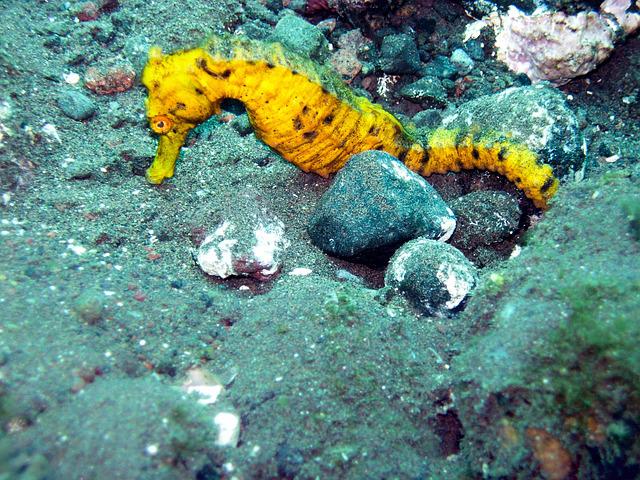
The mechanism of nature gets complex with every discovery to try to do. Pouches and pockets aren’t just to carry the young ones or things in them. There are several purposes why mammals have small pockets/pouches in their bodies. A male horse is one such water animal that has a small pocket pouch in its body.
Interestingly, a male sea horse uses this space to carry its egg for 10-25 days before releasing them into a fully formed little creature.
8. Wallaby (Family Macropodidae):
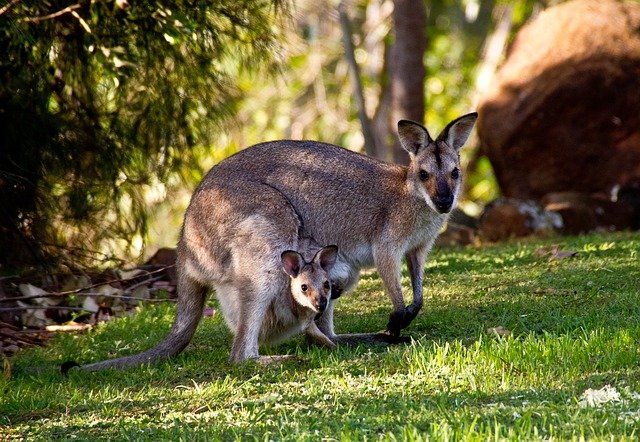
Similar to looks like a kangaroo, a Wallaby is a small to medium-sized creature that has strongly blessed feet. They jump great distances when they predict predators around them. Wallabies are almost the same as kangaroos and have a pouch to carry their small joys. The tiny wallabies immediately crawl into their mother’s pocket after their birth and observe the entire nature around them. Even after they leave their mother’s pouch, the attachment remains so strong that even when they predict some danger, they immediately jump back to their mother.
9. Sugar glider (Family Petauridae)
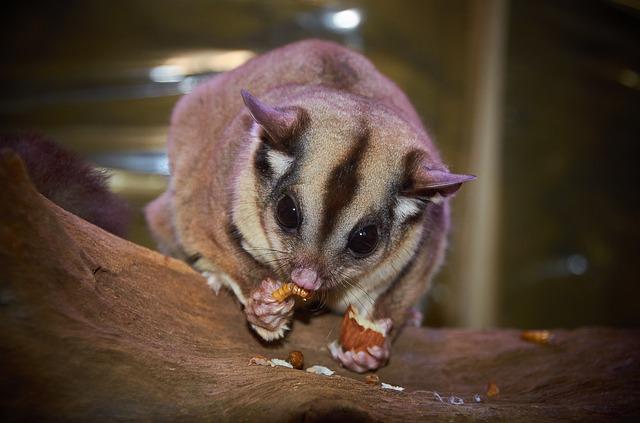
The sugar glider is a nocturnal gliding possum, which is mainly found in Indonesia, Australia, and Papua New Guinea. The process of giving birth to new ones is quite a short-duration process. The female gliders take nearly 15 to 17 days as their gestation period and then the little one is born. Unlike the pouches of other mammals, the sugar gliders don’t have big visible pouches. They have small pouches and the little one crawls in here to get the warmth and nourishm ent from its mother. The little joey weighs around 0.2 grams. His mother’s pouch has 2-4 nipples, a scented gland and a septum that protects Joey from frictional forces and other landing movements.
10. Tasmanian Devil (Family Dasyuridae)
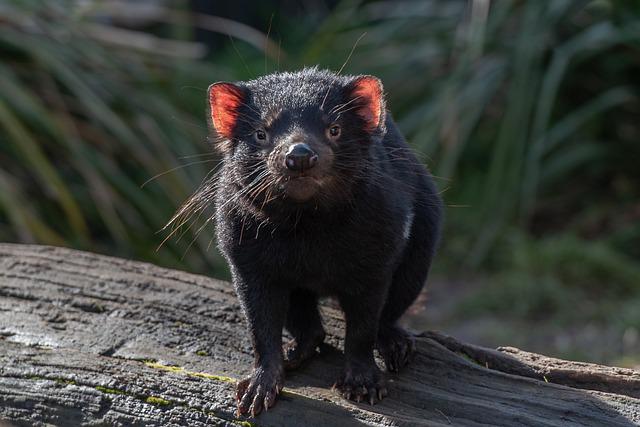
A little carnivorous and dangerous too, these Tasmanian devil marsupial animals also have pouches in their body. But their pouches are placed uniquely in their body. Having pouches at the back of their body. The pouch keeps away all the dirt and dust for the little joys. The pouch of the Tasmanian devils can support up to 4 little ones. These babies grow strong and independent in just 9 months and jump faster just like the other marsupial mammals.
11. Numbat (Family Myrmecobiidae)
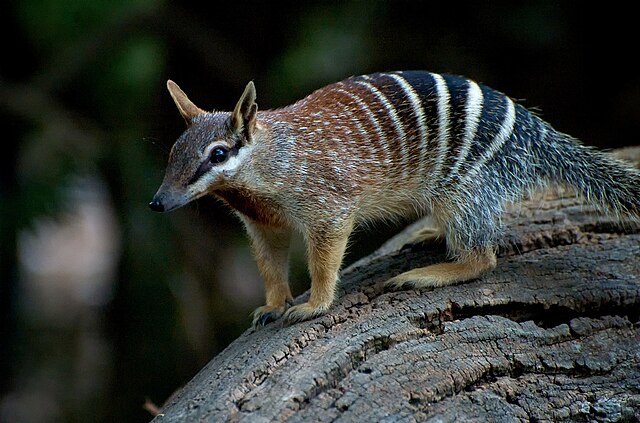
The numbat (Myrmecobius fasciatus) is a small, insect-eating marsupial native to Western Australia. They are also known as banded anteaters, and have a rear-facing pouch to protect their young.
Despite being a marsupial, the numbat is unlike the more commonly recognized marsupials like kangaroos or koalas. Its habits are more reminiscent of anteaters or other insectivorous animals.
Numbats are primarily diurnal, meaning they are active during the day. They are solitary creatures and spend much of their time foraging for termites. Their long tongue, which can extend up to 10 centimeters, aids in capturing their preferred prey from within termite mounds and fallen logs.
12. Quokka (Family Macropodidae):
The quokka is a small marsupial that belongs to the macropod family, which also includes kangaroos and wallabies. They have pouches to carry their offspring. These adorable animals are primarily found on Rottnest Island near Perth in Western Australia, although they are also found on the mainland in some parts of Western Australia.
13. Bilby (Family Thylacomyidae):
The bilby is a fascinating Australian marsupial renowned for its endearing appearance and unique lifestyle. These small, nocturnal creatures are recognized for their long ears, silky blue-grey fur, and distinctive, long, slender snout.
Bilbies, also known as rabbit bandicoots, have backward-facing pouches to protect their young. This pouch serves as a protective haven for their young, known as joeys, sheltering them from the harsh desert environment as the mother forages for food. The pouch also prevents sand and debris from entering while the bilby burrows in the arid outback in search of its primary diet—mostly insects, seeds, and small reptiles.
14. Marsupial Mole:
The Marsupial Mole is a special animal found in Australia that’s quite different from other moles. These burrowing marsupials have pouches but lack external ears. It’s small and lives underground, with a body specially adapted for digging.
Even though it’s called a “marsupial” mole, it doesn’t have a noticeable pouch like many other marsupials, and its ears are tiny and hidden. Instead of a big pouch, the female marsupial mole has small pockets around her body where she keeps her babies safe. These tiny pockets keep the babies protected while they are very small and can’t survive outside.
15. Cuscus (Family Phalangeridae)
The Cuscus is a funny-looking animal found in places like Australia and New Guinea. It’s like a mix between a possum and a monkey, with a furry body and a long tail. The special thing about the female cuscus is that she has a pouch, like a pocket, where she carries her babies. This pouch is where the baby cuscus stays safe and grows until it’s ready to come out.
The cuscus likes to live in trees and eats things like leaves, fruits, and sometimes insects. They are good climbers and move around the trees using their strong tails. But these creatures are facing problems because people are changing their habitats. Efforts are being made to help protect these interesting animals and where they live.
Read More, List of Antarctic Animals that you can only See In Antarctica
These are the Animals with pouches. There are more than 250 species of pouches that can amaze you with their way of living.
Frequently Asked Questions:
No, Bats don’t have pouches. Only marsupial mammals have pouches and bats are eutherian (placental) mammals.
Yes, Koalas are marsupial mammals therefore female koalas have pouches. The Koalas keep their young in pouches until they are fully developed.
No, Squirrels are members of the family Sciuridae, not Marsupials. So, the squirrels don’t have pouches.
Penguins are birds and they spend their time on land, in water, or both.


